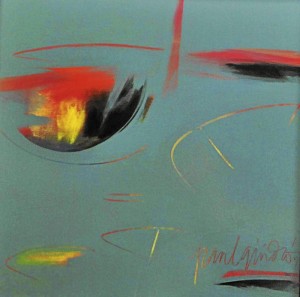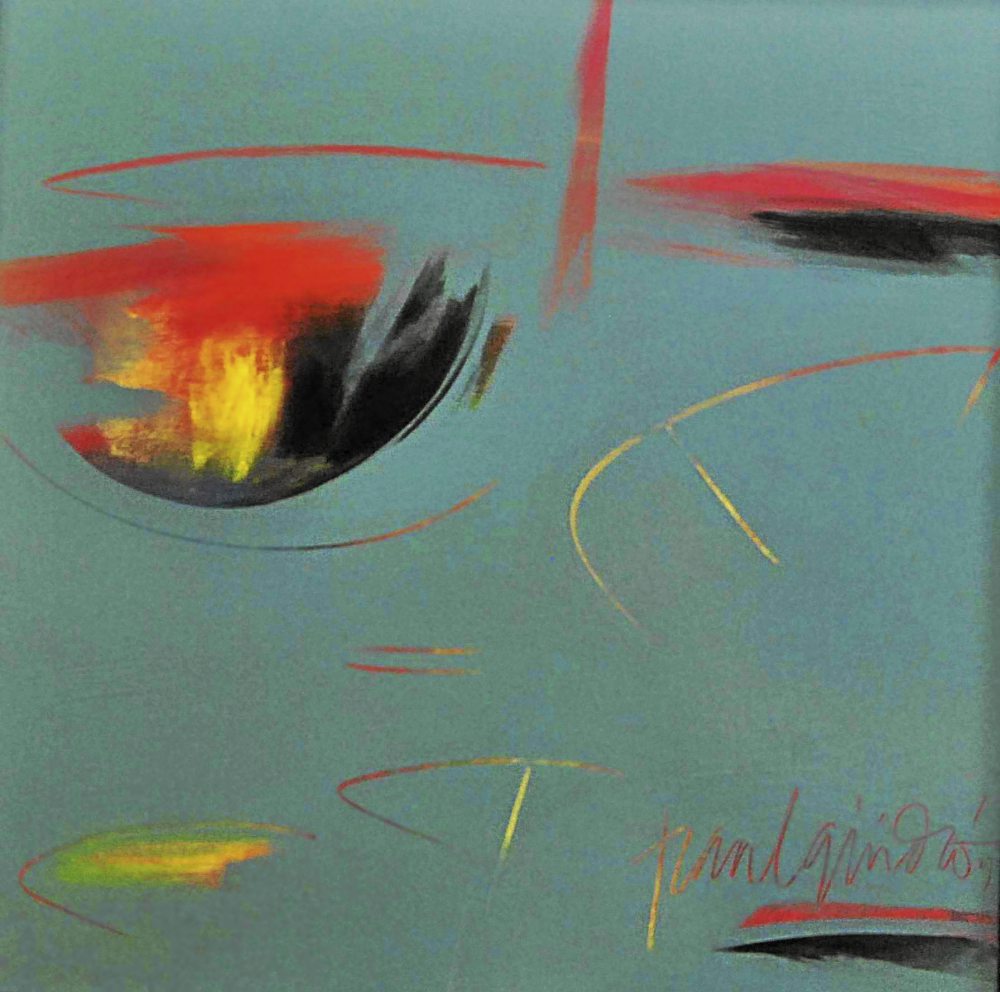 The best way to get to know painter Raul Isidro is to view his latest exhibit in ArtistSpace Gallery at Ayala Museum, until Nov. 17.
The best way to get to know painter Raul Isidro is to view his latest exhibit in ArtistSpace Gallery at Ayala Museum, until Nov. 17.
There is a quietly haunting piece called “Changing World,” a burst of arresting colors in “Yellow Apartment,” and visual tales of survival in the metropolis in pieces like “Dream” I, II and III.
After spending 10 years abroad, Isidro is still in touch with the ebb and flow of events in the country of his birth.
The first work that gets your attention is his 48 x 60-in acrylic “Pedring,” and you realize the artist is aware of the coming and going of unpredictable weather disturbances in the country.
The title evokes flooded streets and hungry refugees, but, in the work of Isidro, you find everything distilled and refined and yet the basic images remain. Isidro confirms that “Pedring” is a visual rendering of a flooded Metro Manila.
“That painting is my reflection of people wading through floods and you will notice people walking and looking at the horizon, as if asking when the water will subside,” Isidro says. “I went through all the floods of Metro Manila during my student days in the ’60s from UST where I studied and down to Sampaloc where I lived.
In memory of home
Metro Manila was the setting of the early stage of his evolution as an artist after growing up in his native Calbayog City in Western Samar. His college days at UST saw him figure prominently in all kinds of arts competition.
He later tried teaching at Philippine Women’s University, where he eventually headed the Fine Arts department.
He spent a decade in California and got to participate in exhibits in the US, Israel, India, Hong Kong, China, Indonesia, Spain, Germany, France, The Netherlands.
But then again, he has never really left his home province in the memory of which he painted an absorbing work, “Curacha.” (It happens to be the title of a film by another son of Calbayog City, Chito Roño).
“Curacha refers to a festive dance during important gatherings of Samareños during fiesta, weddings or political gatherings,” the painter explains. “A prominent male personality is usually paired with a lady to dance this love dance. Such honor is bestowed upon the pair who are showered with money to raise funds for socio or religious projects in the locality. Curacha is a love dance which is fast, with the male running after the lady partner. There is no fiesta with out Curacha in the province. As it is, Curacha is what symbolizes the Waray culture. Curacha to me is fiesta or celebration.
“Most of my works actually show movements showing the people, the happy mood of every celebration. These are action paintings accompanied by movements and colors of a festive community.”
The secret of Isidro’s genius is the manner with which he could evoke varied moods and images and yet manage to reproduce them with just a few strokes with no emotional baggage showing. He is familiar with the faces of tragedy in his homeland, the growing evidence of climate change and the like.
But in his hands, the images linger and the feast of distinct colors give his works a unique edge over other output. This could be the result of maturity, which gives him a new way of looking at things, people and events.
Colors of winter
At this phase of his creative life, he admits to injecting a touch of nostalgia in some of his works through neutral colors of winter.
 “I think you get a feel of maturity when you are in full control of the medium and you are able to apply varied techniques to be able to manipulate the application of the media you are using,” Isidro explains.
“I think you get a feel of maturity when you are in full control of the medium and you are able to apply varied techniques to be able to manipulate the application of the media you are using,” Isidro explains.
In his younger days, when he was drawn to competition fever, he could finish a piece of work within 28 hours.
“I cannot work this long anymore,” he says. “Age is catching up with me.”
For the moment, he is drawn to working on acrylic, which is a faster-drying medium. “I worked on different formats, from circles to ovals to square and verticals or horizontals, which are harder to compose based on available space.”
For Raul Isidro, the arts are always an exploration.
He advises young artists to continue experimenting with materials and go deep into research and develop their own style.
For now, he knows what makes an artist and how to be in good shape for his art. Even for the national and international acclaim he has reaped, he is sure of one thing—the best way is not to rest on your laurels but always finding time to paint and study new techniques.
You know what he is talking about when you catch up with Raul Isidro’s exhibit at Ayala Museum.
Call 8237252 for inquiries.









































